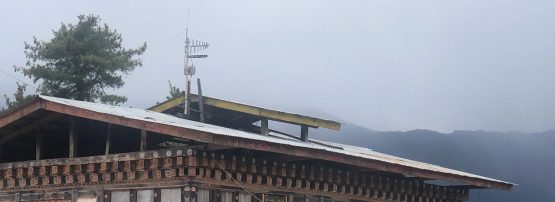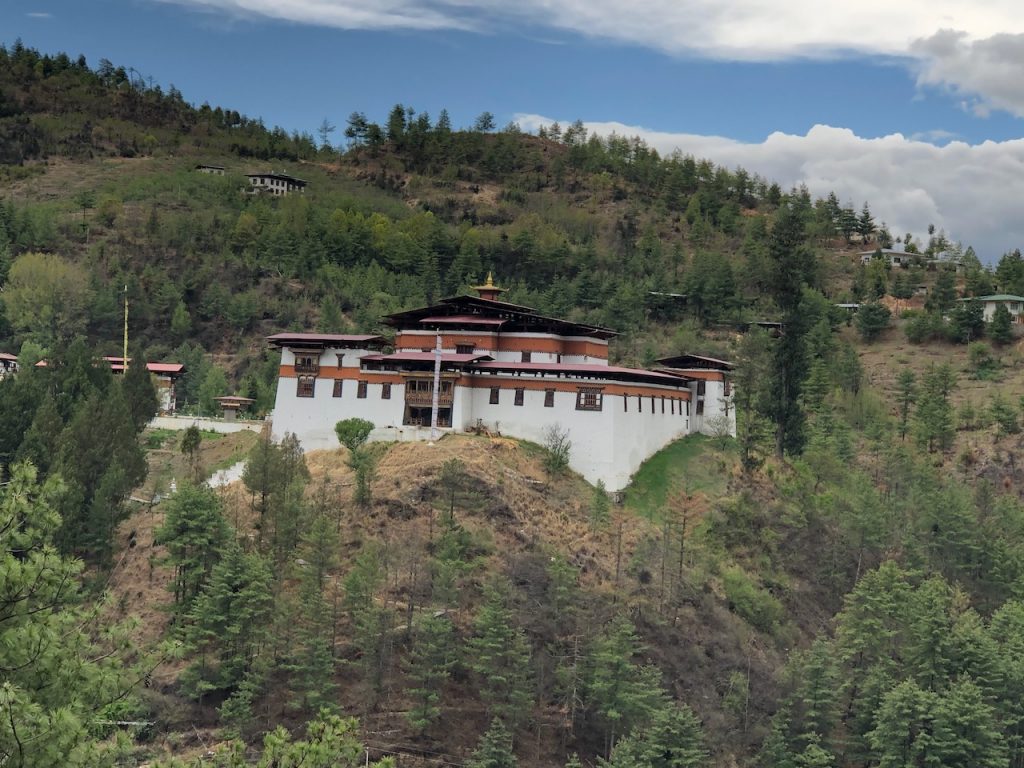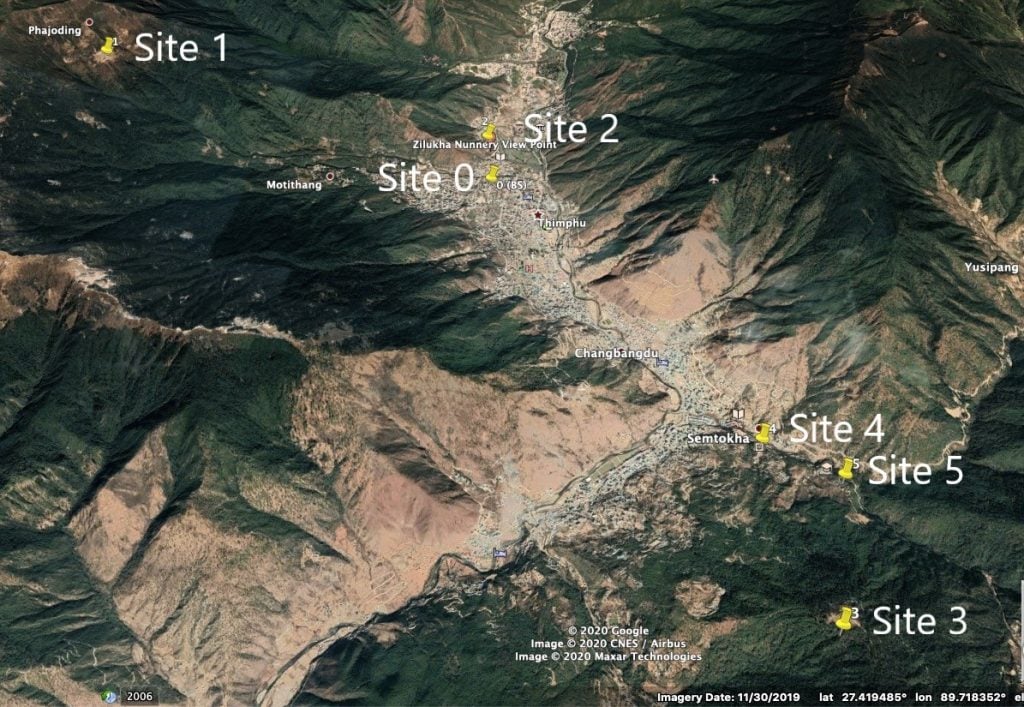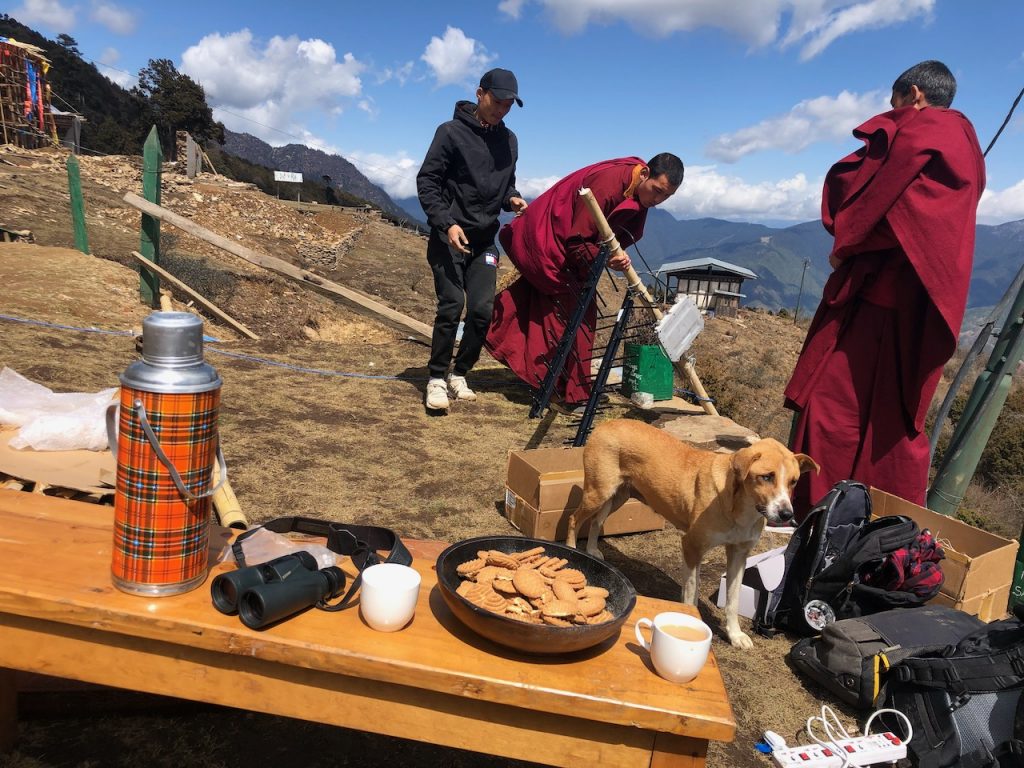
Constructing physical Internet infrastructure in Bhutan’s mountainous terrain is a difficult task, even for the most experienced and well-resourced operators. So when recent start-up Internet Service Provider (ISP), NANO, was considering ways it could trial broadband connectivity provision to households in hard-to-reach locations, it had to think outside the box.
Any solution would need to be cost effective, as there were few returns to be gained from the semi-rural communities with low population densities that really needed connections — most of the sites being considered were monasteries and nunneries. With the help of a grant from ISIF Asia, NANO decided to try an experiment with TV White Space (TVWS) technology to see if it would be cost effective to connect these areas.

TV White Space technology
TVWS technology makes use of the broadcast spectrum used by television to deliver broadband Internet, in a similar manner to 4G. Unlike 4G, it relies on a base station and client sites that provide wireless at a range of up to 10 kilometres, and can be beamed through walls, vegetation and entire buildings. This makes it a good choice for remote areas.
Tshering Norbu, Managing Director at NANO, said he first heard about TVWS when the government of Bhutan was considering TVWS for an e-Health project. “In 2013, I was looking after Internet services for Bhutan Telecom. The Department of IT & Telecom of the Bhutan government wanted to trial a small e-Health project in one remote location in central Bhutan through Asian Development Bank funding,” he said. “For that small project, one company donated TVWS equipment for last-mile connectivity of about 300 meters to the mobile tower.”
Norbu’s project was of considerably larger scope, however. The team had to study TVWS to determine whether it was the right fit. “With emerging TVWS technology completely new to us, a lot of effort and time had to be invested to research and study about it including case studies of its global deployments,” he said.
Satellite technology was ruled out as too expensive for the task at hand. “The main reason for choosing TVWS was due to its better coverage and penetration,” he said.
Read: TakNet – A community white space wireless network
As the only ISP with a licence to conduct TVWS trials, the team at NANO had two key tasks to complete before beginning the rollout: Choosing locations for a base station and five client sites, as well as getting a supplier. Both of these tasks were handled via trial and error.
Selecting the sites
All the selected sites were scattered around the capital city of Thimphu, with a central location “0” serving as the base station and the five client sites at Phajoding Monastery (1), Zilukha Nunnery (2), Talakha Monastery (3), Simtokha Monastery (4) and a residential home (5), as shown in Figure 1 below.

The Zilukha Nunnery had previously used ADSL broadband, but the copper connection had proved too unstable. This was the only site that had ever been connected to broadband.
The lack of infrastructure meant ISPs would have to charge high prices for connections, and these proved far too high for local residents. In addition, cellular data coverage also proved unreliable at all these sites.
All the sites were eager participants once they learned it would provide Internet access free of charge. Their involvement extended far beyond just agreeing to get involved in the project — because these locations did not have trained IT staff, the monasteries and nunneries each had a local teacher who accompanied the project teams and learned the basics of connecting to the Wi-Fi and basic troubleshooting and support.
“The locals were very enthusiastic for anything that is Internet-related,” Norbu said. “For people in urban areas, always being connected can feel like a nuisance as we have to attend to emails and messages and online calls; but for those remote and semi-remote communities, the Internet is a luxury and a service they put to a more beneficial and better use.”
NANO also needed to determine what kind of skills were the most important for residents to learn. “We selected one or two individuals who were even more eager from each site/community and spent half a day teaching them basic troubleshooting and level one support focused mostly on the physical and visual level, like examining light indicators on network equipment.”
He said that this worked out quite well in reducing the requests for assistance to just the times they wouldn’t be able to fix it themselves. “Having trained them in basic troubleshooting, the calls we would receive for support were after they had exhausted their own efforts and mostly were requests for level two support. We helped them solve most problems remotely by guiding them over the calls. We had only a few cases where we had to physically visit the community and each time, we demonstrated the cause and how to resolve it,” he said. “That imparted more advanced learning and we haven’t had to visit any communities at all for a long time now.”

In addition, other users in the communities nearby helped out by testing app functions.
Getting the right equipment
Given there were no large-scale rollouts that could be used for guidance, there were few suppliers who could provide the TVWS technology they needed. Initially, the team shortlisted three companies from US, Israel and India. They settled on the US company, but then found they had a lengthy lead time.
In the end, they switched to Canadian company, Redline Communications.
“We spent lot of time researching and learning about TVWS technology and manufacturers, and evaluating their products, performances, deployment cases and prices because TVWS was still new to us. We also knew that because TVWS technology and products were not mature, they would not be available off the shelf and had to be manufactured on order. The manufacturing and shipping time was estimated to easily take two and half to four months. The harsh cold winter season in Bhutan was another major concern. So, we were under extreme time pressure.”
Plans for the future
NANO plans to continue monitoring the project and will decide on further developments depending on usage.
“We will continue to maintain and operate the current implementation to gauge the long-term sustainability of TVWS,” Norbu said. “We can convert the current TVWS access network into a backhaul when more customers grow in those communities.”
Norbu said they had learned two key lessons from the project. “We learned that immature technology can be worth it, but you need to take the time, no matter how long it takes, to thoroughly research the technology and its OEM/supplier. The choice has to be made on the mix of their demonstrated performance while accounting for cost considerations,” he said. “If the right choice and plan is made, the actual implementation can be very easy.”
The second key lesson was about how well people in remote areas receive these new technologies. “Rural communities are very enthusiastic about the Internet and put it to very gainful use,” he said.
Read: APNIC welcomes 6,000th direct Member, NANO
A report on the project is available via the ISIF Asia website.
This research was supported through the APNIC Foundation’s ISIF Asia 2018 grants, under the Internet Operations Research Grant funded with an APNIC contribution. A USD 30,000 grant was awarded to NANO for this project.
The views expressed by the authors of this blog are their own and do not necessarily reflect the views of APNIC. Please note a Code of Conduct applies to this blog.

excellent move for rural and mountanous regions broadband access. How the regulatory regimes are helping it to launch,